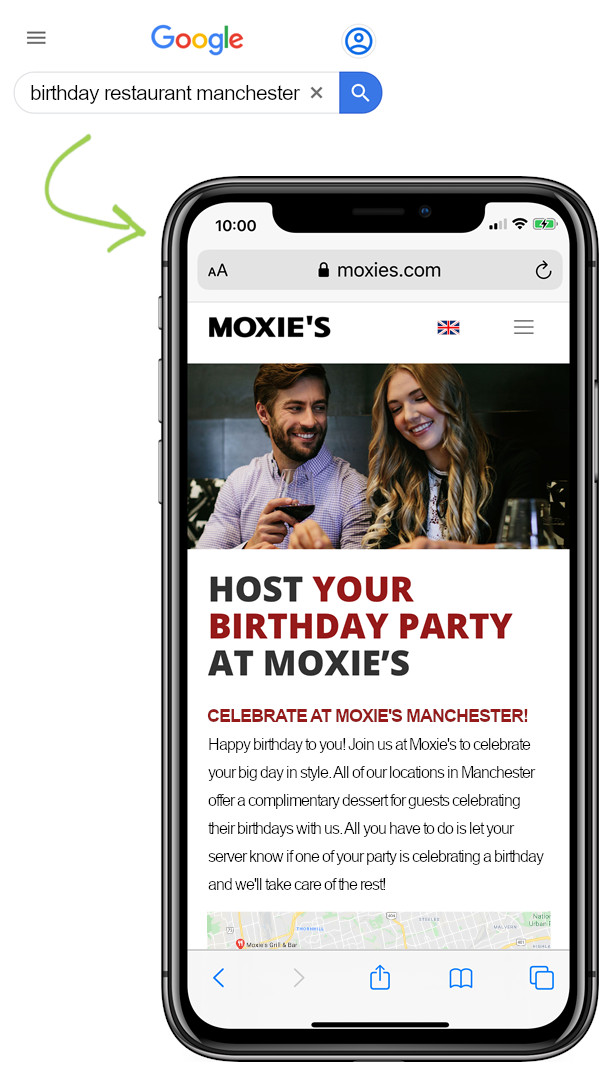
 How-to-woo-your-local-customers-thi...
How-to-woo-your-local-customers-thi... 
Building awareness. Converting leads. Nurturing loyalty. Digital marketing can seem like a never-ending courtship, but it might be easier than you think to keep your local customers in love with your brand—or, more importantly, in love with their local store.
With a little effort and planning, you can keep the home fires burning between you and your most valued customers: all of them, wherever they are! So, let’s pop open the bubbly and celebrate Valentine’s Day with our five favourite digital tactics to woo local customers.
-
Keep your local data up to date
Sometimes it’s the simplest gestures that mean the most. An email, a phone call, a visit. It’s true in love and it’s true for enterprise brands, especially those with distributed local footprints. Countless hours of relationship-building suddenly pay off when a customer—new or existing—makes a real connection with their local store.
But the opposite is also true. If you fail to reciprocate a simple gesture, the whole endeavour might just backfire dramatically. Take your local business listings, for example. Your audience has pretty modest expectations of you: correct street address, up-to-date phone number, accurate operating hours. But fail to meet those expectations and you may lose a customer for life.

Customer meets brand. The relationship develops online. One thing leads to another. Customer shows up at the brand’s store. Sadly, the store closed an hour ago—the business listing had the wrong opening times. End of relationship. End of story.
-
Respond to reviews
How do you respond to a love letter? By replying with one of your own! Too many businesses consider a five-star review to be its own reward, but they’re missing a trick. This is a priceless opportunity to forge a connection and amplify the positive sentiment.
- Express thanks
- Wedge in your business name and target keywords for SEO
- Casually mention your latest offer or promotion
- End with a compelling call to action
Of course, true Casanovas know that negative reviews present equally valuable opportunities to not only publicly turn the situation around but weave in some subtle marketing poetry—and literally change your stars in the process.
-
Make your inventory SERP-friendly
Being cute, coy, and mysterious might be an effective tactic in the dating game, but the same approach is rarely advisable for retail and ecommerce brands. Instead, it’s usually more compelling to be bold, confident, and completely upfront about what you have to offer. In 2020, that means putting your product inventory (yes, the entire thing!) out there for the world to see.

Fortunately, Google’s new organic product carousel is tailor-made to woo customers directly on the SERP. Simply submit your product feed, validate the product markup, and generate an additional feed via Manufacturer Centre. The result? Your products may be included in the carousel that’s prominently displayed for most retail searches, giving users the opportunity to compare prices, read reviews, and move straight to purchase in just a couple of clicks.
The organic carousel may be the latest salvo in Google’s ongoing war with Amazon (the search giant will do anything to steal a sale from Bezos and co.), but we’re all set to benefit as a result. All is fair in love and retail.
-
Be available (even when you’re closed)
Ghosting is not cool, okay? If someone shows an interest in you—your services, your wares, your locations—it’s only good and proper to reciprocate. The ever-expanding functionality of Google My Business (GMB) and other local search platforms puts a fine point on this principle, with searchers increasingly able to connect directly with local businesses without even visiting their sites.
For instance, Google now offers users the option to “request quotes” from Google Guaranteed service area businesses. These businesses can set specific messaging hours (i.e. different from each location’s operating hours) to respond to user queries via the GMB app. Sounds great, but consider the consequence: users will inevitably come to expect prompt out-of-hours responses. That means businesses of all shapes and sizes will need real people to field questions even when the store in question is closed—at least until AI steps in on their behalf.
-
Create localised content
How do I love thee? Let me count the ways: your competitive pricing, your convenient opening hours, your welcoming in-person experience… But why is your online presence so wide of the mark? Why are all your locations serving up cookie-cutter, brand-level content?
If you’re a multi-location brand without an Enterprise-to-Local marketing strategy, you’re set to be left behind in 2020. It’s time to tailor your approach to each region, city, or location, engaging and converting your various audiences with locally relevant content. That could include anything from a long-tail SEO strategy to conversion-optimised location pages and store-specific social feeds.

In short, a local-first world demands a local-first approach. Make the effort to cater to specific audiences—accounting for the where as well as the who—and they will appreciate it. Just remember to be authentic: nobody wants to be disappointed when they finally meet their online crush in person.
Live. Laugh. Love. Profit?
Every day is Valentine’s Day when you’re in the business of wooing customers. But the people you’re seeking to impress expect more from modern brands. Maintain your store listings, respond to their praise (and criticisms), make their lives easier, be reachable, and speak to their locales. After that, you might just be able to forge some meaningful long-term relationships.

